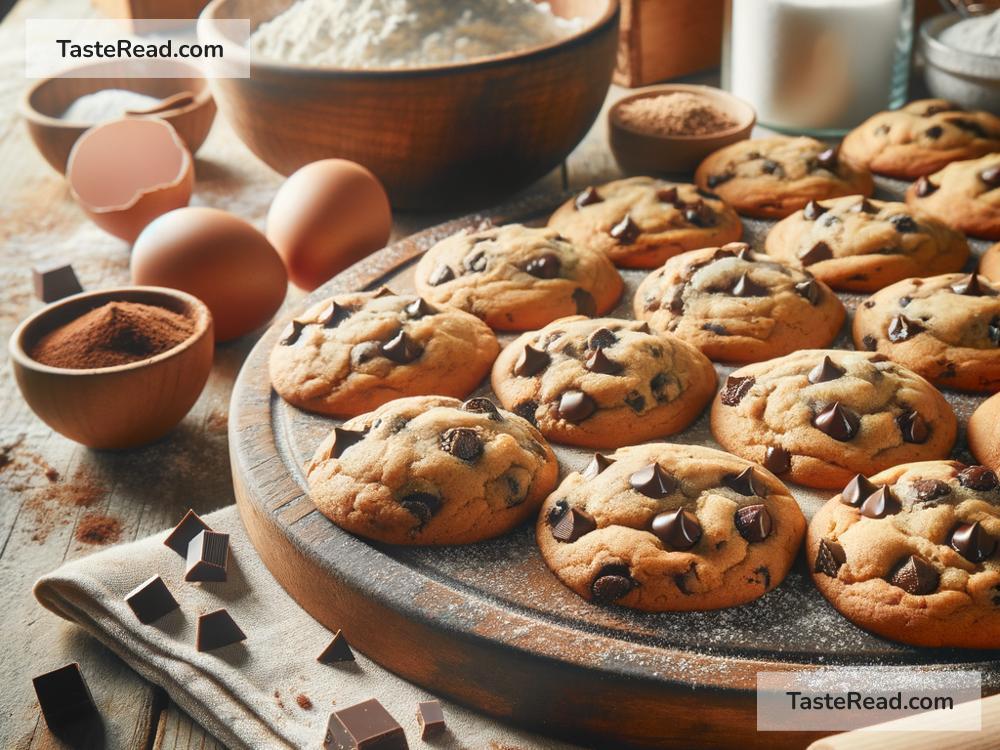How to Bake Perfect Cookies: A Simple Guide
Who doesn’t love the smell of fresh cookies baking in the oven? Whether you like chocolate chip, oatmeal raisin, or sugar cookies, homemade cookies are hard to resist. But sometimes, baking cookies can feel tricky. Maybe you’ve made cookies that turned out too flat, too hard, or burned on the edges. Don’t worry—this guide will teach you how to bake perfect cookies every time! Let’s get started.
1. Gather Your Ingredients
The first step to baking perfect cookies is to gather high-quality ingredients. Most cookie recipes call for basic items like:
- All-purpose flour
- Baking soda or baking powder
- Salt
- Butter
- Sugar (white, brown, or both)
- Eggs
- Vanilla extract
- Your favorite mix-ins (like chocolate chips or nuts)
Using fresh, quality ingredients really makes a difference. For example, good butter gives cookies a rich flavor, and fresh baking soda helps them rise properly.
2. Measure Properly
Measuring ingredients accurately is key to perfect cookies. Baking is a science, so don’t just guess or eyeball it! Use measuring cups and spoons to get the right amounts.
- Flour: Spoon it into the measuring cup, then level it off with a knife. Don’t pack the flour into the cup, or your cookies will turn out dry.
- Sugar: Scoop and level as you would with flour.
- Liquids: Use a liquid measuring cup for ingredients like vanilla extract or milk.
If you’re tempted to skip measuring carefully, remember—a little too much flour or butter can completely change how your cookies turn out.
3. Let Your Ingredients Adjust to Room Temperature
Cold ingredients can make cookie dough hard to mix. Let ingredients like butter and eggs sit at room temperature for about 30 minutes before using them. Soft butter blends easily with sugar, which makes your cookies light and fluffy. Room-temperature eggs also help the dough bind together better.
4. Follow the Recipe
It’s tempting to experiment and change the recipe, but if you want perfect cookies, stick to the instructions! Follow the steps in order and use the right amounts of each ingredient.
Pay attention to instructions like “cream the butter and sugar.” This means you need to whisk them until they’re light and fluffy—usually for 2–3 minutes. Creaming helps create air pockets in the dough, which gives your cookies a nice texture.
5. Don’t Overmix
Once you add the dry ingredients to the wet mixture, be careful not to overmix. Stir until the flour just disappears; that’s it! Overmixing can make your cookies tough instead of tender. It’s okay if there are a few lumps in the dough—don’t stress.
6. Chill the Dough
Do you want cookies that keep their shape and don’t spread too much? Chill your dough before baking! Place the bowl of cookie dough in the refrigerator for at least 30 minutes (or longer if your recipe suggests it).
Chilling the dough helps solidify the butter, so the cookies stay thick and don’t flatten out in the oven. Plus, it allows the flavors to blend for a tastier cookie.
7. Prepare Your Baking Sheet
Use baking sheets lined with parchment paper or a silicone mat. These help prevent cookies from sticking and make clean-up easier. Avoid greasing the baking sheet—too much grease can make your cookies spread or burn.
8. Space Cookies Properly
When placing cookie dough on the baking sheet, leave 2–3 inches of space between each cookie. Cookies spread as they bake, so spacing them gives each cookie room to grow. If they’re too close, they’ll stick together and lose their shape.
9. Watch the Oven Temperature
Preheat your oven according to the recipe. Most cookie recipes call for an oven temperature of around 350°F (175°C). Use an oven thermometer if you’re not sure about your oven’s accuracy.
Keep an eye on your cookies as they bake. They’re usually done when the edges turn golden but the centers still look soft. Overbaking makes cookies hard, so take them out a little early—they’ll firm up as they cool.
10. Cool Them Properly
Let cookies cool on the baking sheet for 2–5 minutes before moving them to a wire rack. Cooling on the sheet lets them finish baking and settle. After that, transfer them to the rack to cool completely. This prevents cookies from becoming soggy underneath.
11. Store Them Right
Once your cookies are completely cool, store them in an airtight container. If you’re making soft cookies like chocolate chip, add a slice of bread to the container. The bread keeps the cookies moist and delicious. For crisp cookies like ginger snaps, store them in a dry container to keep them crunchy.
Bonus Tips for Success
- Taste your dough: Good cookie dough leads to great cookies! (Just don’t eat raw dough with eggs.)
- Use a scoop: Cookie dough scoops make it easier to get evenly-sized cookies, which bake more evenly.
- Experiment: Once you’ve learned the basics, you can play with flavors—try adding spices, extracts, or different mix-ins.
Final Thoughts
Baking perfect cookies isn’t hard once you know the basics. Start with a good recipe, measure your ingredients carefully, and pay attention to details like chilling the dough and oven temperature. With practice, you’ll be making cookies that impress everyone—your family, your friends, or even yourself!
So, grab your apron and a mixing bowl, and start baking today. Perfect cookies are just one batch away! 🍪


